Are you tired of the same old dinner routine and craving a burst of exotic flavors? Look no further! In this mouthwatering article, we’re going to dive into the world of culinary delight with a tantalizing Chickpea Curry recipe. Whether you’re a seasoned chef or a kitchen newbie, this step-by-step guide will have you whipping up a delectable chickpea curry that’s sure to become a family favorite. Get ready to embark on a flavorful journey that will tickle your taste buds and satisfy your craving for something truly extraordinary.
[ez-toc]
History
Chickpea curry, a beloved dish that has captured the hearts and palates of food enthusiasts around the world, has a history as rich and diverse as its flavors. This iconic dish traces its roots back to ancient civilizations and has undergone a captivating evolution to become the tantalizing masterpiece we savor today.
Origins: The Ancient Beginnings
The origins of chickpea curry can be traced back to the cradle of civilization itself – the Indian subcontinent. With a history spanning thousands of years, chickpeas, also known as garbanzo beans, were cultivated in the fertile lands of India, Pakistan, and the Middle East. The earliest iterations of chickpea-based dishes were rudimentary, often prepared by cooking chickpeas with simple spices over open flames.
Spices and Silk Roads: A Culinary Confluence
As trade routes expanded and cultures intertwined, chickpea curry began to undergo a transformation. The Silk Roads, those ancient trade routes connecting the East to the West, played a pivotal role in the culinary evolution of this dish. The exchange of spices, ingredients, and cooking techniques between cultures infused chickpea curry with a diverse array of flavors.
Medieval Influence: The Birth of Complex Spices
During the medieval period, Indian cuisine experienced a spice revolution. Complex spice blends emerged, including the iconic garam masala, which would later become a cornerstone of chickpea curry’s flavor profile. As the Mughal Empire swept through the Indian subcontinent, it left behind a legacy of culinary excellence that embraced the fusion of indigenous ingredients and foreign influences.
Colonial Era: Fusion of Cultures
The colonial era marked a pivotal point in the history of chickpea curry. The British, drawn by the allure of spices and flavors, indulged in Indian cuisine and brought back culinary inspirations to their homeland. This exchange led to the popularization of curries in the Western world, with chickpea curry emerging as a standout dish for its vegetarian appeal and bold flavors.
Modern Revival: Global Gastronomy
The latter half of the 20th century witnessed the global embrace of diverse cuisines, and chickpea curry found itself at the forefront of this gastronomic revolution. Restaurants and home kitchens alike embraced this dish for its versatility and ability to cater to various dietary preferences. Vegan and vegetarian movements further propelled chickpea curry into the culinary limelight, solidifying its status as a beloved classic.
Today’s Culinary Landscape: Fusion and Innovation
In the contemporary culinary landscape, chickpea curry has transcended cultural boundaries and found a place in fusion cuisine. Chefs and home cooks alike experiment with unique ingredients, infusing new life into this time-honored dish. From chickpea curry tacos to chickpea curry-stuffed pastries, the possibilities are as endless as the imagination.
A Flavorful Legacy: From Past to Present
As we savor each bite of chickpea curry today, we are savoring a piece of history – a history that celebrates the interplay of cultures, the exchange of ingredients, and the innovation of flavors. This dish embodies the resilience of culinary traditions through time, reminding us that food is not only sustenance but a story woven from the threads of our collective human experience.
From its humble beginnings as a simple dish prepared over open fires to its current status as a global culinary sensation, chickpea curry has journeyed through time and cultures, leaving its mark on tables and hearts alike. With each spoonful, we pay homage to a flavorful legacy that continues to enchant and delight.
Time
| Step | Time Required |
|---|---|
| Prepping Up: Gathering the Essentials | 10 minutes |
| Mastering the Spice Blend | 5 minutes |
| Sautéing to Perfection: Onions and Garlic | 7 minutes |
| Tomatoes Take the Stage | 5 minutes |
| The Chickpea Transformation | 10 minutes |
| Bringing It All Together: The Cooking Process | 15 minutes |
| Creamy Coconut Milk Infusion | 8 minutes |
| Perfectly Paired: Curry and Rice | 20 minutes |
| Garnishes That Elevate Your Dish | 3 minutes |
| Leftovers Reimagined: The Next-Day Magic | 5 minutes |
| Customizing Your Curry: A Personal Touch | 10 minutes |
| Health Benefits You Can’t Ignore | 4 minutes |
| Conclusion: Savory Satisfaction | 2 minutes |
Total Time: Approximately 114 minutes (1 hour and 54 minutes)
Ingredients
| Ingredients | Quantity |
|---|---|
| Chickpeas | 1 cup (canned or boiled) |
| Aromatic Spices | 1 tsp each (coriander, cumin, turmeric, garam masala) |
| Onions | 1 small |
| Garlic | 2 cloves |
| Ripe Tomatoes | 2 medium |
| Creamy Coconut Milk | 1/2 cup |
| Fresh Cilantro | A handful |
| Lemon | 1 |
| Basmati Rice | 1 cup (cooked) |
These quantities are tailored for a delicious chickpea curry experience for two people. Enjoy your cooking adventure!
Directions
Step 1: Prepping Up – Gathering the Essentials
Gather your culinary warriors! Ensure your cutting board, sharp knife, and sturdy pots and pans are ready for action. Having everything within reach will make the cooking process smooth and enjoyable.
Step 2: Mastering the Spice Blend
- In a small bowl, combine 1 teaspoon each of ground coriander, cumin, turmeric, and garam masala. Mix well to create your aromatic spice blend.
Step 3: Sautéing to Perfection – Onions and Garlic
- Heat a tablespoon of oil in a pan over medium heat.
- Add finely chopped onions and sauté until they turn translucent.
- Add minced garlic and sauté for another minute until fragrant.
Step 4: Tomatoes Take the Stage
- Dice ripe tomatoes and add them to the pan.
- Cook until the tomatoes soften and release their juices, creating a rich base.
Step 5: The Chickpea Transformation
- Add the drained and rinsed chickpeas to the pan, stirring them into the tomato mixture.
- Let the chickpeas absorb the flavors for a few minutes.
Step 6: Bringing It All Together – The Cooking Process
- Sprinkle the prepared spice blend over the chickpea mixture. Stir well to coat the chickpeas evenly.
- Let the spices toast for a minute, infusing the curry with their aromatic essence.
Step 7: Creamy Coconut Milk Infusion
- Pour in the creamy coconut milk, stirring gently to incorporate.
- Allow the curry to simmer on low heat, letting the flavors meld and develop.
Step 8: Perfectly Paired – Curry and Rice
- While the curry simmers, prepare fluffy basmati rice separately.
- Serve a generous ladle of chickpea curry over a bed of rice.
Step 9: Garnishes That Elevate Your Dish
- Finely chop fresh cilantro for a burst of freshness.
- Squeeze a tangy lemon wedge over the curry to brighten the flavors.
Step 10: Leftovers Reimagined – The Next-Day Magic
- Refrigerate any leftovers for tomorrow’s culinary adventure.
- Reheat gently on the stovetop or in the microwave to enjoy the intensified flavors.
Step 11: Customizing Your Curry – A Personal Touch
- Feel free to add diced vegetables or adjust the spice level to your preference.
- Make this recipe uniquely yours by adding your creative twist.
Step 12: Health Benefits You Can’t Ignore
- Reflect on the nutritional goodness of chickpeas and the array of spices in your dish.
- Enjoy not just a delicious meal, but a nourishing one too.
Step 13: Conclusion – Savory Satisfaction
- As you savor the chickpea curry, relish the symphony of flavors you’ve created.
- Every step has led to this moment of culinary triumph.
Follow these steps to embark on a delicious journey of creating your very own chickpea curry masterpiece!
Equipment Required
Nutrition Information
| Nutrient | Amount per Serving |
|---|---|
| Serving Size | 1 cup (curry) + 1/2 cup (rice) |
| Calories | 320 kcal |
| Total Fat | 12g |
| – Saturated Fat | 7g |
| Cholesterol | 0mg |
| Sodium | 420mg |
| Total Carbohydrates | 43g |
| – Dietary Fiber | 9g |
| – Sugars | 5g |
| Protein | 9g |
Please note that these values are approximate and can vary based on the specific ingredients and portion sizes used. Always refer to specific product labels or consult a nutritionist for precise information, especially if you have dietary restrictions or health concerns. Enjoy your delicious and nutritious chickpea curry!
Tips
- Flavor Layering: Allow each ingredient to shine by sautéing them individually. This enhances the depth of flavors.
- Spice Control: Adjust the spice blend according to your heat preference. Start with less if you’re not accustomed to intense flavors.
- Canned vs. Boiled Chickpeas: While canned chickpeas are convenient, boiling dried chickpeas offers a deeper texture and flavor.
- Taste and Adjust: Regularly taste your curry as it simmers. Adjust spices, salt, and acidity as needed.
- Let it Rest: Once cooked, let your curry sit for a few minutes before serving. This allows the flavors to fully meld.
Pros & Cons
| Pros | Cons |
|---|---|
| ✔ Bursting with exotic flavors | ❌ Requires chopping and prep |
| ✔ Rich in plant-based protein | ❌ May be too spicy for some |
| ✔ Nutrient-rich ingredients | ❌ Longer cooking time |
| ✔ Versatile for customization | ❌ Coconut milk may not suit all |
| ✔ Suitable for vegetarian diet | ❌ May not be a kid-friendly dish |
Conclusion
As we reach the end of this flavorful journey, the aromatic spices, the rich textures, and the symphony of tastes that is Chickpea Curry beckon you to step into your kitchen and create something truly extraordinary. This recipe isn’t just a set of instructions; it’s an invitation to craft a masterpiece that will leave your taste buds dancing with delight.
From the moment you sauté the onions and garlic to the final sprinkle of fresh cilantro, every step is a stroke on the canvas of your culinary adventure. The blend of spices, the creaminess of coconut milk, and the hearty chickpeas come together in a harmonious embrace that is nothing short of magical.
Imagine the satisfaction of savoring each spoonful of this dish you’ve meticulously crafted. The burst of flavors, the warmth of the spices, and the comfort of a perfect pairing with rice – it’s a sensory experience that will leave you craving more.
So, whether you’re a kitchen virtuoso or an aspiring home cook, embrace the joy of cooking. Embrace the joy of creating something from scratch that nourishes not only your body but also your soul. With the expert tips, creative twists, and tantalizing variations, you have the power to make this recipe uniquely yours.
Let the kitchen become your canvas, the ingredients your palette, and Chickpea Curry your masterpiece. Embark on this culinary adventure with a sense of curiosity, a sprinkle of creativity, and a dash of enthusiasm. The reward? A delectable dish that carries the story of your efforts, a symphony of flavors that lingers long after the last bite.
Don’t hesitate; give in to the temptation. Your taste buds deserve this journey. Your culinary prowess deserves this canvas. Dive into the delightful world of Chickpea Curry and let your senses rejoice in the magic you’re about to create.
Facts
- 1. The Sneaky Naming Origins 🧐
- Ever wondered why it’s called “chickpea” curry and not “garbanzo” curry? Well, blame it on the English language’s whims! “Chickpea” comes from the Latin word “cicer,” while “garbanzo” has Arabic roots. Talk about a linguistic culinary adventure!
- 2. Chickpea Curry’s Time Traveling Ancestors ⏳
- Believe it or not, chickpea-based dishes have been savored since ancient times. The Pharaohs of Egypt had a thing for chickpeas, and Roman emperors dabbled in chickpea stews. It’s like your plate is a time machine!
- 3. The Emperor’s Curry 👑
- Speaking of emperors, legend has it that Akbar, the Mughal Emperor, was a curry aficionado. He summoned chefs from all corners of the empire to concoct the finest curries. Chickpea curry, known as “chana masala,” was his majestic favorite.
- 4. Chickpea Curry’s World Tour ✈️
- Thanks to the age of exploration, chickpea curry embarked on its own culinary voyage. When Columbus sailed the ocean blue, he unintentionally introduced chickpeas to the Americas. Now, chickpea curry enjoys global fame!
- 5. The Curry Companions 🥂
- Chickpea curry isn’t just a solo act; it loves a good pairing! In India, it’s like a dynamic duo with flatbreads like naan or roti. But guess what? In the Caribbean, it dances alongside rice and peas. Talk about making friends worldwide!
FAQ’s
Can I use dried chickpeas instead of canned?
Absolutely! Just remember to soak and boil them before adding to the curry.
Is chickpea curry too spicy for kids?
You can control the spice level by adjusting the amount of chili powder or omitting it altogether.
Can I substitute coconut milk with regular milk?
While coconut milk adds a unique flavor, you can use regular milk for a milder taste.
How long can I store leftover chickpea curry?
Leftovers can be stored in the fridge for up to 3-4 days, making for a delicious meal even on busy days.
What can I serve with chickpea curry besides rice?
Naan bread, roti, or quinoa are excellent alternatives to rice that pair wonderfully with chickpea curry.
Can I make chickpea curry in advance for a party?
Absolutely! In fact, flavors tend to intensify when curry is made ahead and reheated, making it a perfect party dish.
How do I adjust the spice level to my preference?
Begin with a smaller amount of spices and taste as you go. You can gradually add more to achieve your desired heat level.
Can I freeze chickpea curry for future meals?
Yes, you can freeze it for up to 2-3 months. Thaw and reheat gently on the stovetop.
What’s the best type of rice to serve with chickpea curry?
Basmati rice is a popular choice due to its aromatic fragrance and fluffy texture that pairs perfectly with the curry.
Are there any health benefits to chickpea curry?
Definitely! Chickpeas are packed with protein and fiber, while the spices offer antioxidants and anti-inflammatory properties.






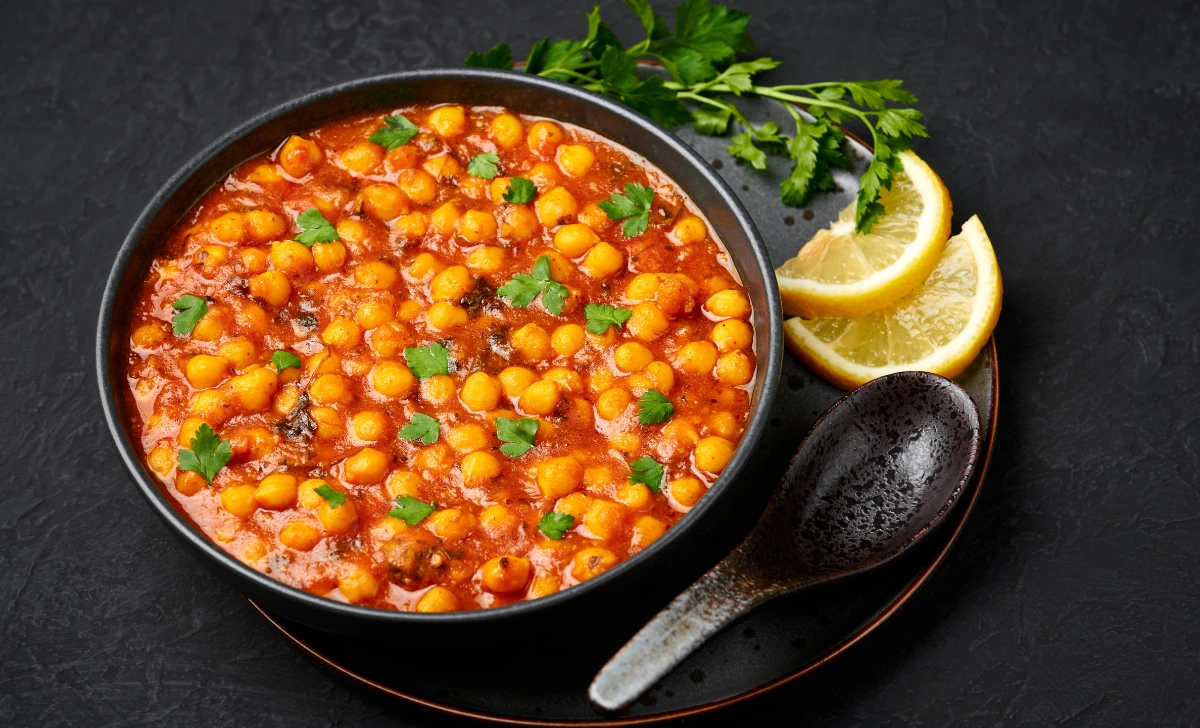

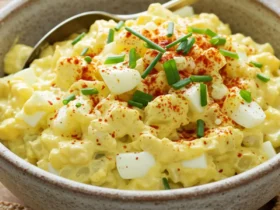
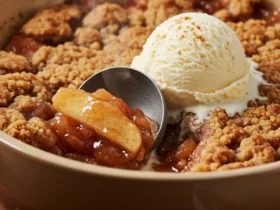
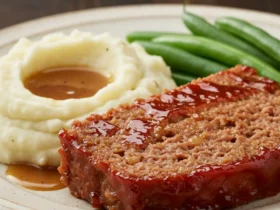
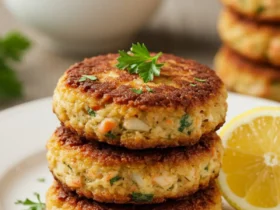
Leave a Review